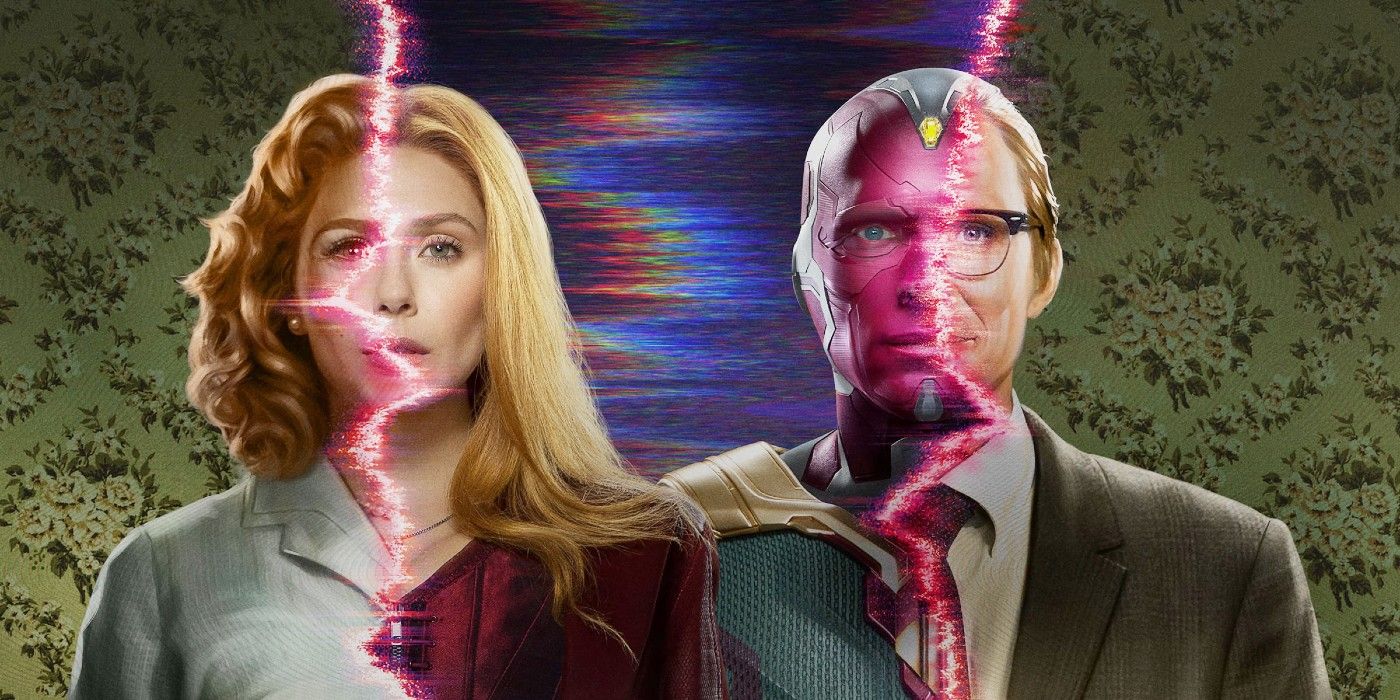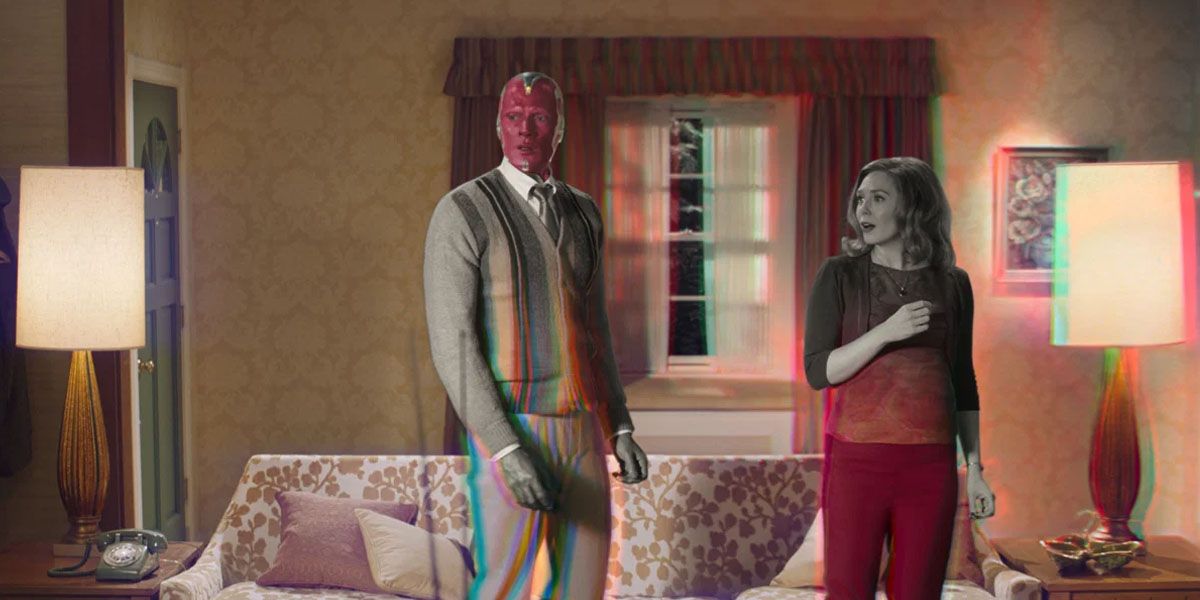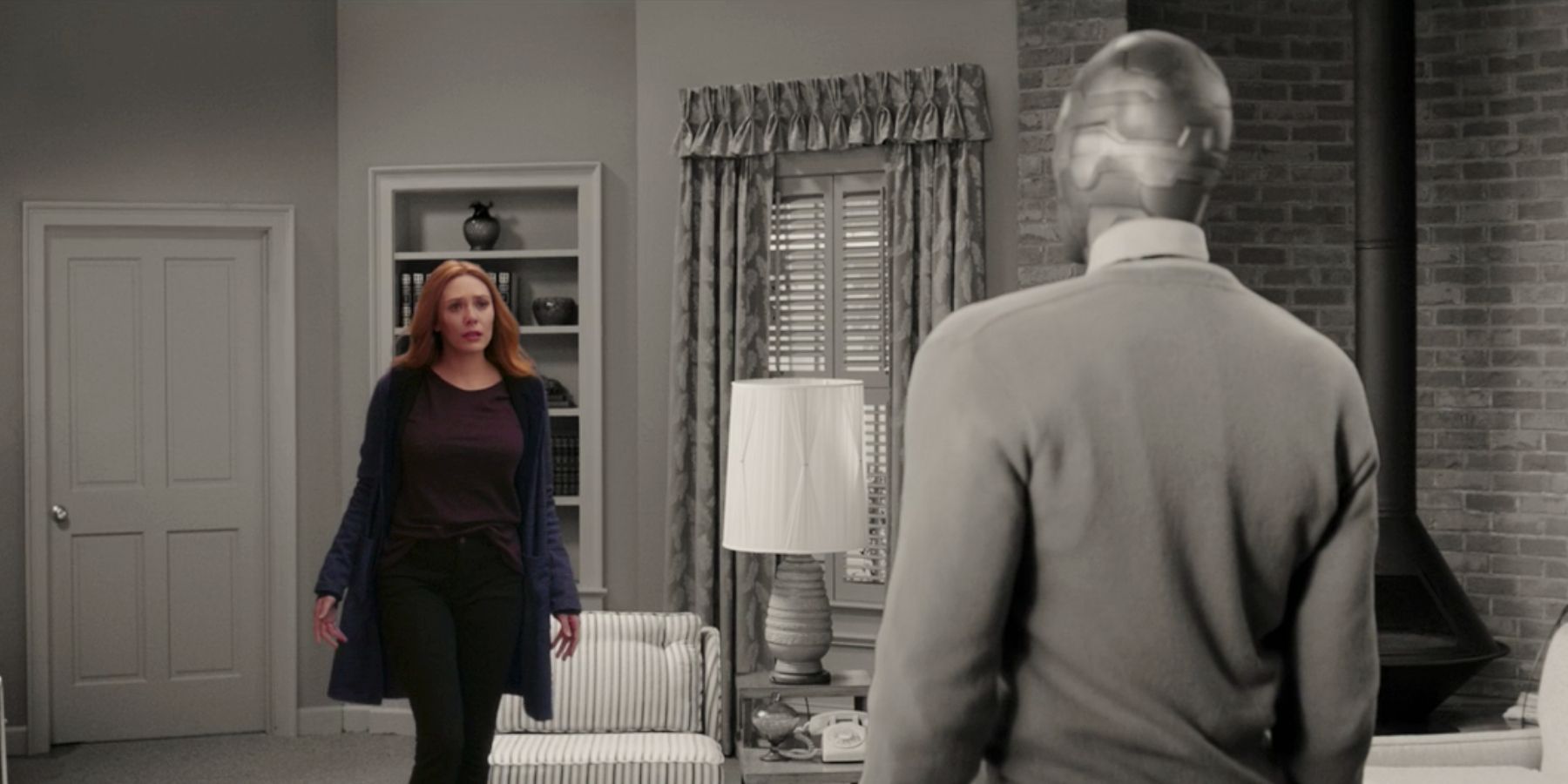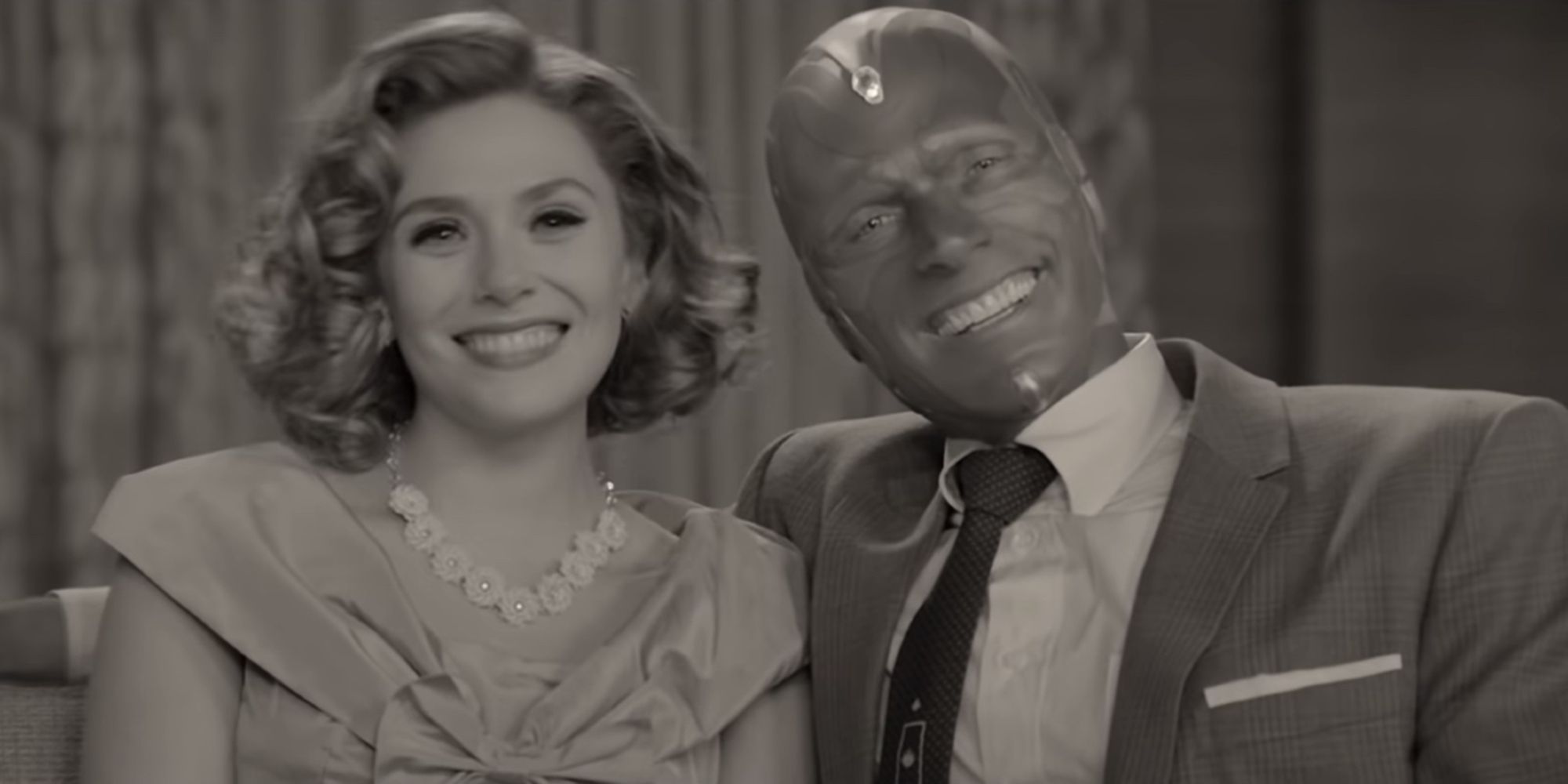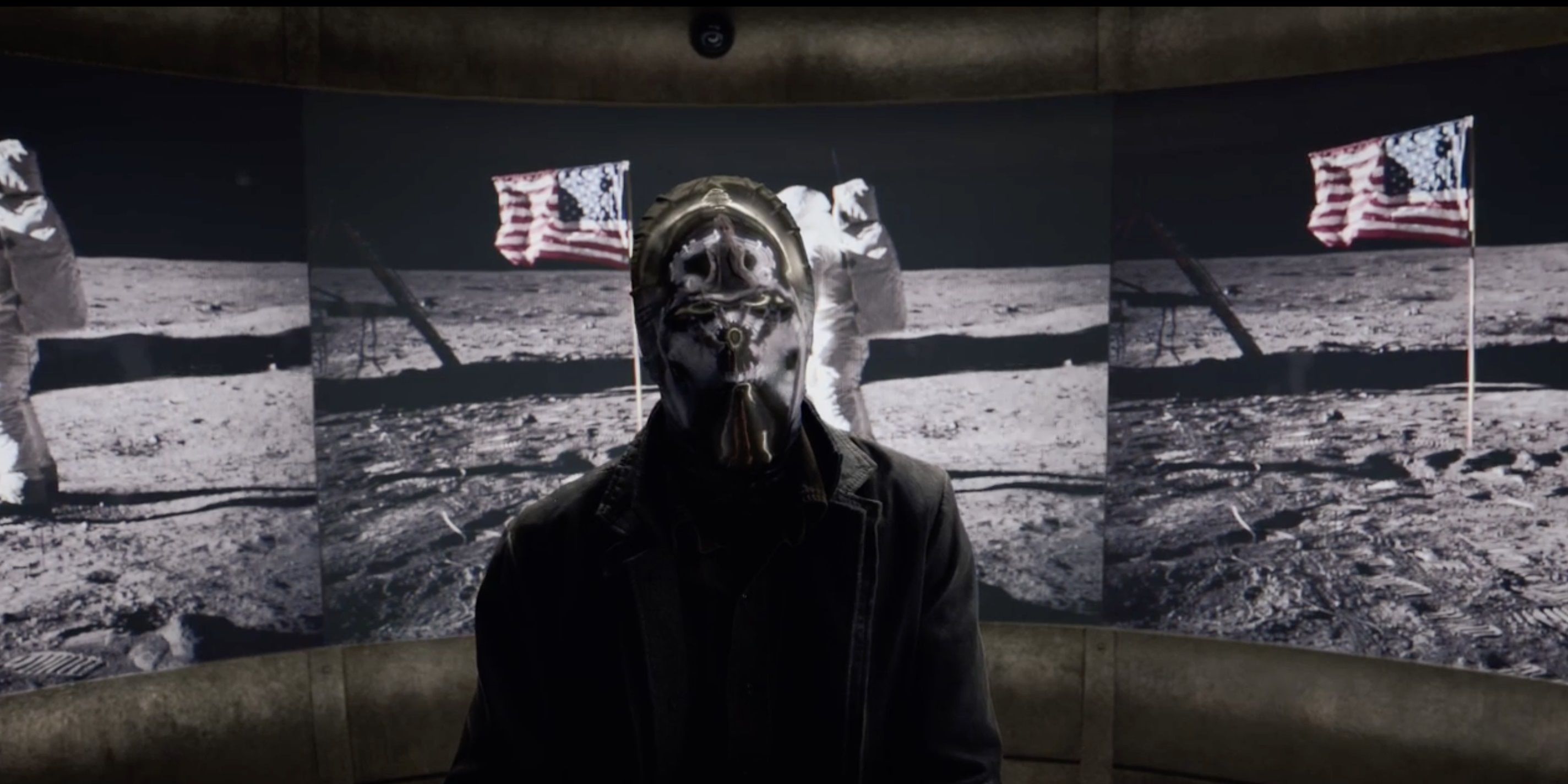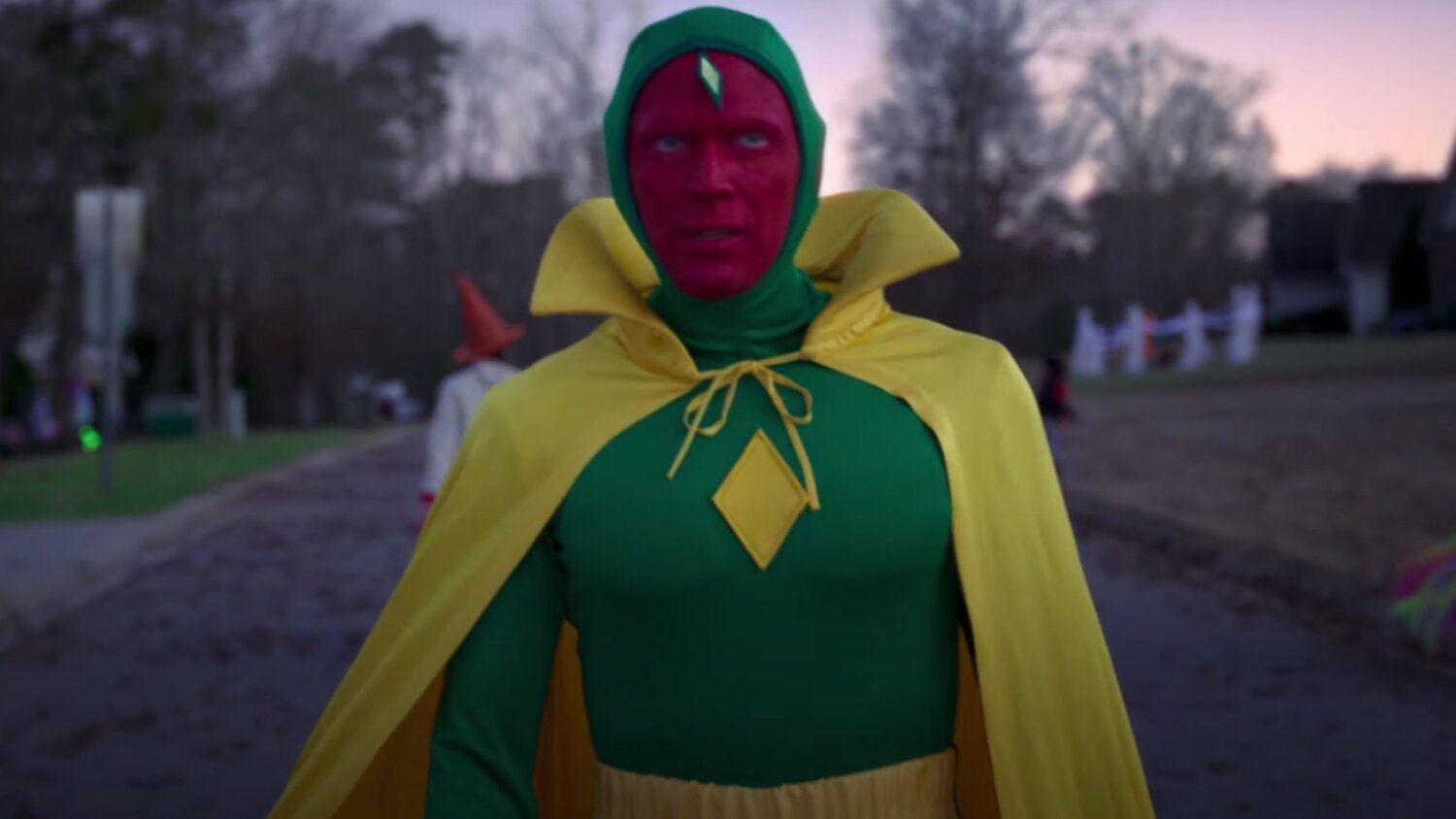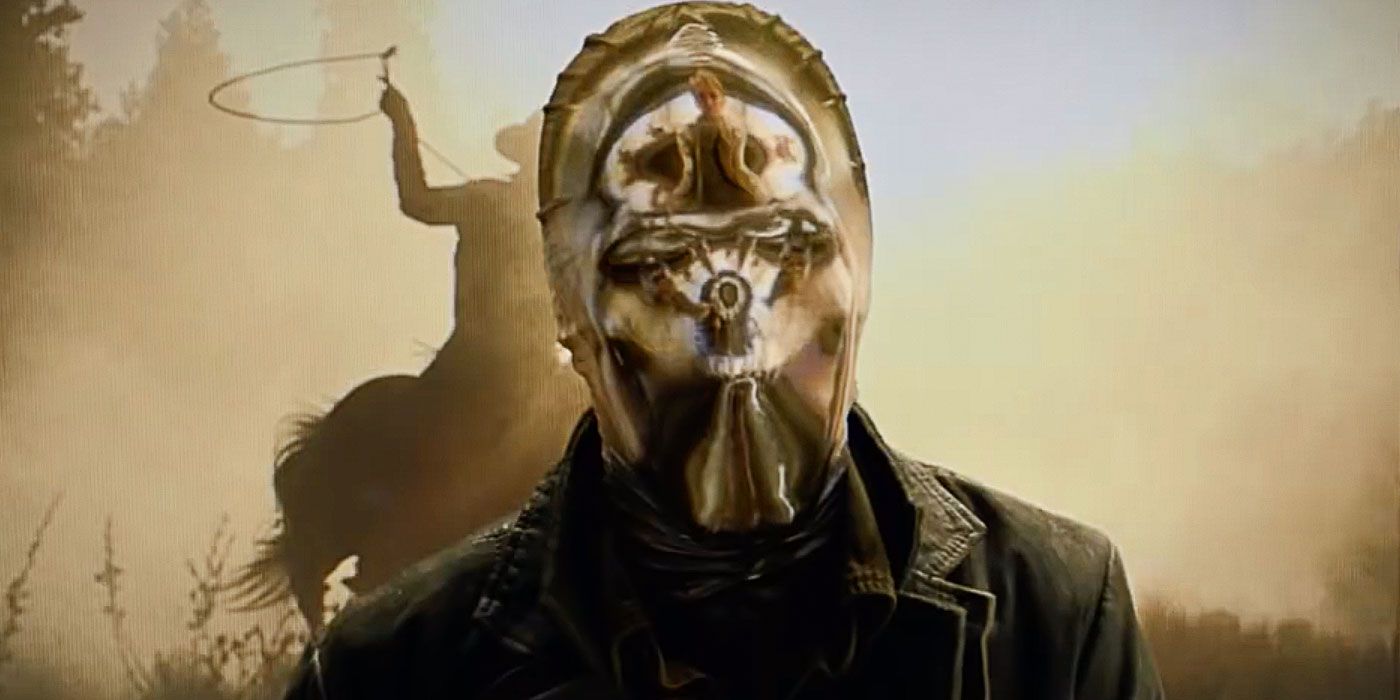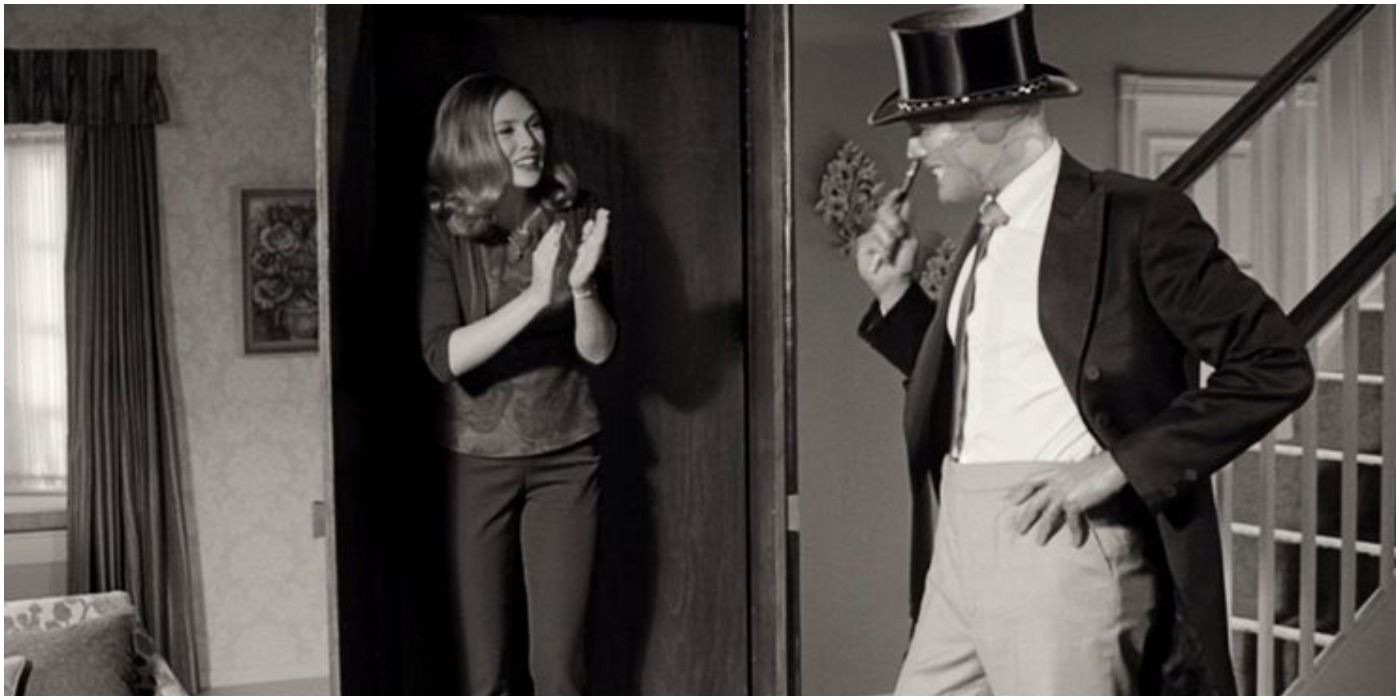Visual effects studio Monsters Aliens Robots Zombies (MARZ) has been steadily adding to its impressive list of projects, recently wrapping on WandaVision for Marvel Studios, which saw Wanda Maximoff/Scarlet Witch bringing the deceased Vision back to life, at least sort of. In addition to the Marvel Cinematic Universe series, MARZ has worked on The Umbrella Academy Season 2 for Netflix and Watchmen for HBO.
In an exclusive interview with CBR, MARZ visual effects supervisor Ryan Freer talks about the secrets in crafting the Vision's evolving looks through time on WandaVision, incorporating A.I. programs to help render facial and head CG effects in real-time and leaning into the vintage possibilities of the Disney+ television series.
In this age of binge culture, WandaVision has been the weekly water cooler show everybody talks about and speculates over. How has it been watching it explode in the early months of this year?
Ryan Freer: It's been awesome; it's been great. It's one thing with family members calling me up to tell me they're so proud that I got to work on it but also trying to ask me for little nuggets of information. Even if I did know something, which I don't because, even internally, we knew what we were doing on shots and scenes, but we didn't know the grand scheme of the narrative for the season. So even if I knew something, I couldn't tell [them]. I was just as much a fan working on the show as I was watching it.
One of the things that has taken the internet by storm since the series wrapped and process shots and videos were released with Paul Bettany and his blue makeup and ears. How was it figuring out how to color correct Vision for black and white?
Freer: Before they shot it, Tara Demarco, the VFX supervisor, she worked with her team to figure out what shade works best when applying a lot on top which would turn him black and white. When he was red, his luminescence wasn't proper and his specularity was all off so [it was about] finding the proper shade of blue and also something that wasn't so reflective. You don't want him to look matte, but you also don't want him to look too shiny because he has this very unique face paint on. And the way it can look on Paul and react to his skin can look different from shot-to-shot.
Trying to blend that all in and make it look cohesive and blending with the CG...I love that shots are coming out with Paul as a blue guy with ears; a lot of people don't know there's a lot of CG on him. They think that's all on him and that's a metal thing they put over his ears, that it's all done in makeup, but it's not. It's all done in CG...we knew about blue Vision a long time and as we were starting on it, we asked Marvel if anyone would see the Vision blue or if we'd be the only ones and, at that time, they were like "Nobody will ever see him." I'm glad that it got out and they did the whole Assembled [special].
I think people underestimate how much VFX there is in the entire show, even apart from what they'd assume is simple color correction or the floating objects in the series premiere. What are some elements that were more complicated than people might realize?
Freer: I think one of the cool things with the show is, whenever they did an effect, it was very much an era specific effect. In talking about the floating objects, we were actually blending our floating objects with other objects that they had actually puppeted within the scene, which was very cool. We didn't just go in and [digitally] remove things on sticks and fishing lines, which is something you would normally do with VFX, they were purposefully trying to make them janky and off-time. When we were routing in our CG elements that were also era specific, we had to match that same kind of look so that was very fun. But that kind of thing ran through the entire show, with transition effects from the '50s to the '60s, '70s and '80s. The look is constantly evolving and moving with the show, which is very cool.
How was it working within those era specific technical considerations, from period-appropriate aspect ratios to changes in cinematography?
Freer: Some of it was a little bit technical, with each episode having its own aspect ratio and some episodes starting in one aspect ratio and pulling out to another. It wasn't the most regular thing that we do within our pipeline because everything is we're used to everything being so streamlined where we have the aspect ratio and format for the whole show. So we had our whole team figuring out [what] we're doing in this episode and that episode and transitioning into another one.
As far as the effects moved through time, even the look of Vision moved through time as well. There's still some things I don't think everybody knows about just yet: For the first three episodes, Vision has eyelashes and that was a creative thing that they kept in. And his eyes don't have that mechanical thing in [it] and that was a creative decision by Marvel to keep those things out of there. I think they wanted to keep things a little more wholesome, a little less digital, even though we're doing everything else. As we started to get into the later episodes, the eyelashes come off and the contacts get put in and he becomes the Vision that we know and love from all the movies.
As someone that's a fan of the movies and comics, what was something you wanted to put as your own mark on Vision, as much as you could, for the show?
Freer: I think that coming into the show and seeing Vision and how different he was acting and seeing a Vision we'd never seen before was trying to stay true to all that emotion. And Paul was doing such an amazing job and, with some of the goofy, slapstick stuff, [we tried] to still keep it looking like Vision. [Laughs] When they filmed the first couple of episodes, the director was worried. We heard a story that even Paul was worried [because] they didn't know how it would look once we put everything on top of him.
I remember we got through our first couple shots and sent it over to Marvel and they said it looked great and we got a call a week or two later and they said Paul requested to see what we were working on. And he took a look at it and had a sigh of relief and he loved it, so that was pretty awesome.
How early in the process was that because that must be quite the vote of confidence.
Freer: Yeah! We did the episodes in sequence but that was just during the first episode and that was when everyone was worried. There was one really early WandaVision shot where he just said "Wanda" and that was a long, long time ago when there was one in black and white but there had been nothing else since then and it was another render [company] that did that one and they wanted some tweaks since then. But they never did anything like the slapstick stuff in the kitchen so that was around the beginning of Episode 1.
How was it coming on to this project, with Marvel already having a pretty set idea of how they wanted Vision and the show to look?
Freer: The name of our company is Monsters Aliens Robots Zombies and it's very much a character-based company, we really like to concentrate on that. We can do all sorts of VFX, like on landscape, but we really do like characters and, especially, a character can't be a character without a head and that's something we've been focusing a lot on and really streamlining our pipeline for that. We came off a show recently, Watchmen, where every Looking Glass shot we did and that was a full CG head as well and that was another one a lot of people don't notice. [Laughs].
Because of that, we did have a pipeline built for this kind of work and we have some of the most talented artists from animation, tracking, lighting, compositing, everyone was built for this and once we started going, we knew exactly how long it would take for a shot to get from Point A to Point B, within a day or two.
You also got to do some visual effects with building Westview when Vision flies up over it.
Freer: The Westview stuff we did was in Episode 6 when he flies up and transforms from the costume into his modern Vision look. He flies up to the camera, takes a look at all of Westview and he can see downtown where the party is but he sees Agnes' car which is not doing what everything else is doing and the city is all dark on one side and all lit up on the other and he's wondering why one side of town is all glitching out. We did that shot and built that entire town to the spec of the director's vision of how the town should be laid out since it's not a real place. It was really cool not only being able to build that but to be part of their creative discussions as well which surprised me because there were some really cool moments we were able to put our own creative input into certain effects. A lot of it is predetermined with what they're looking for but sometimes they ask us to play around with things and it's cool to see some of ideas get into the show.
In addition to WandaVision and Watchmen, you guys get to work on The Umbrella Academy, one of the biggest shows on Netflix. How has that been?
Freer: It's amazing! I actually had a conversation with them today, we're already talking about the next season and the new characters that are there. It's so incredible to be a part of and that's one of my favorite [comics and shows] as well; it's so awesome to work on things when you're such a big fan of them. You want to work as hard as you can for everybody but if something's that you're interested in and really like, you want to make it that much cooler.
What were some of the most intensive things to work on for The Umbrella Academy?
Freer: I came on as supervisor for [Season 2] and we did a lot of Vanya and Harlan's powers and the whole last scene, the fight in the barn. All that freakout power between Vanya and Harlan inside the barn was thrown to us and that was super exciting to work on. This [coming] season is going to be bigger and badder and we're so excited to get on it.
Was Looking Glass the most intensive thing to work on in Watchmen?
Freer: I didn't supervise on that show so I can't take credit for that one but it was a MARZ show and it got nominated for a Visual Effects Society Award as well. The way that it was done, it had two cameras on the front and back of the actor's head while they were filming so we were able to make a spherical image. And when someone was acting with that person, you could real-time take the image from that, make it all CG, put the CG cloth over the head, take everything out, take the image and paint it back on for full reflection. Paint out the crew, because they're there filming from the outside. It just came out so beautifully, and I'm so proud of that as well.
The same thing with Vision is it's such a technical thing to get right but, once you have it dialed in, it's very repeatable. To get a head track, a face track and a rotomation that's just rock solid, and especially with Watchmen and the cloth effects, to look realistic, it takes a lot of R&D, fine-tuning and talent. And once you have those people and that crew, it's repeatable and that's when you build that pipeline and handle a large project.
You mentioned being a part of the creative process with WandaVision. What were some moments that you suggested that made the cut?
Freer: The transition shots, when he transitions from human to synthezoid or synthezoid to human, those shots where the era effects, the talent show we had a lot of fun with; the hat through the body. The big ones are the transition shots, we did some [digital matte painting] as well. When he's outside of his house in the '70s in Episode 3, Herb and Agnes are out there talking. They on an actual background but didn't like it so we replaced it with our own digital matte painting. They wanted a house over there and it's got to look retro and vintage and they let us run with it. It looks so cheesy and so flat and that was the point. Normally we don't go that way with visual effects, you want to give it some depth and not look flat but that was cool. There was a lot of little things trickled in here and there, like when he runs her in through the door or he walks through the chair, little fun things like that.
In Episode 3, they wanted his transition to look vintage and they weren't totally sure which way to go and I did little research on effects back in the '70s and '80s what was happening and so we did a Tron thing, with these glowing lines that are very sharp-looking. And then in the modern era, now it's more MCU transition.
Was leaning into those vintage effects a nice change of pace?
Freer: I think it's cool! You don't get to work on vintage effects, no one wants to see them anymore. To get to go in and create that with a character that you love is awesome because everything nowadays is about hiding it; visual effects should be so good that you don't notice it. I don't think that we're there yet but, back in the day, they weren't even trying to hide it. The puffs of smoke and starry glitter and stuff like that was fun and I don't think I probably won't be doing it again unless there's a sequel or something.
Looking back at WandaVision, how was that experience and what you can you tease next for MARZ?
Freer: The show has given us a lot of attention and we're grateful and working with Marvel was an incredible experience and everyone was so amazing over there. We really like them and I think they really like us and hopefully there's more coming and I think there will be. We're also working on the Shadow & Bone series on Netflix.
One of the cool things about MARZ is we don't just have very talented artists but we also have very talented A.I.-machine learning team and that's kind of where this industry is going. What we were able to create specifically for this project was an A.I. script that could basically remove all the tracking markers on Paul Bettany's face and replace them with blue or red skin and at a speed, once it was setup properly, you could run the whole thing over three hours and do, like, fifty shots. That's normally something you very tediously have to remove those markers frame-by-frame or you would ship it to the outsource vendor to do it cheaper for you. This way, we were able to not only keep the costs low and giving the savings to Marvel but that was also helping us speed up the process. I don't know if it's the first time it's been but I've never seen it before and it worked amazingly and even if you're not deepfaking someone, there's still room to use A.I. to do some of the grunt work that VFX has that you'll never see.
How was it turning in the final project?
Freer: It was Christmas Eve at six in the morning. We had to get it done before the Christmas break and we had a couple days to get that in so everyone could sleep well over the break and that was all the Halloween stuff and him coming up to the wall [around town]. We shared him interacting with it with another vendor but we did him walking up to it.
We did have some shots after that, in Episode 9 after Agnes has been defeated and they're together, we did that sequence as well...one of the crazy things is we did all this during COVID and we transitioned from working at our desks and looking at things in-studio very quickly to everyone working from home. Surprisingly, it didn't disrupt our timelines at all. I was wrapping The Umbrella Academy Season 2 and just starting -- the codename for [WandaVision] was Big Red -- and working on both shows at the same time and, all of sudden, you can't go into work. Luckily, we had a little bit of foresight thinking something might happen and were already setting up and it was the right thinking because the transition wasn't as rough as some studios had it.
MARZ didn't lay off anybody because of COVID; some studios shut down and some studios had to downsize. We had The Umbrella Academy and WandaVision and started them at the exact right time where they were able to keep going and I think it total offset their total end delivery by a month or something. I think they wanted to release it in December and it got pushed by just a month. It was a different experience and I think it's definitely changed the landscape of the VFX industry and scaling up and finding amazing talent has never been easier because now they don't have to live in your city, they can remote into a computer outside your office from anywhere in the world.
Written by Jac Schaeffer and directed by Matt Shakman, WandaVision stars Elizabeth Olsen as Wanda Maximoff/Scarlet Witch, Paul Bettany as Vision, Randall Park as Agent Jimmy Woo, Kat Dennings as Darcy Lewis, Teyonah Parris as Monica Rambeau and Kathryn Hahn as Agnes. The series is available to stream on Disney+.

